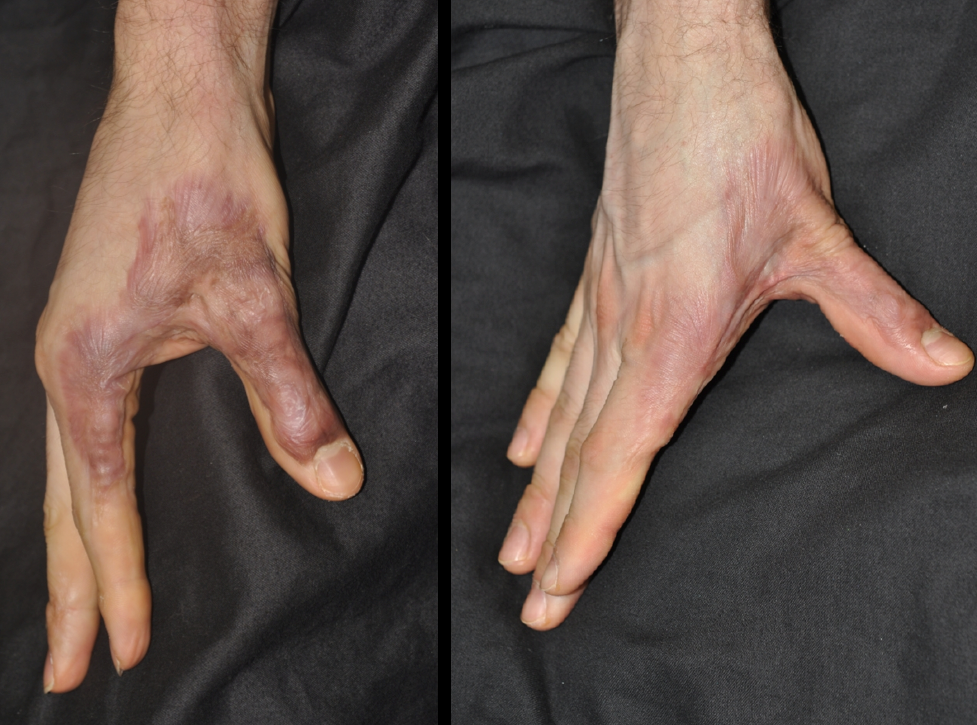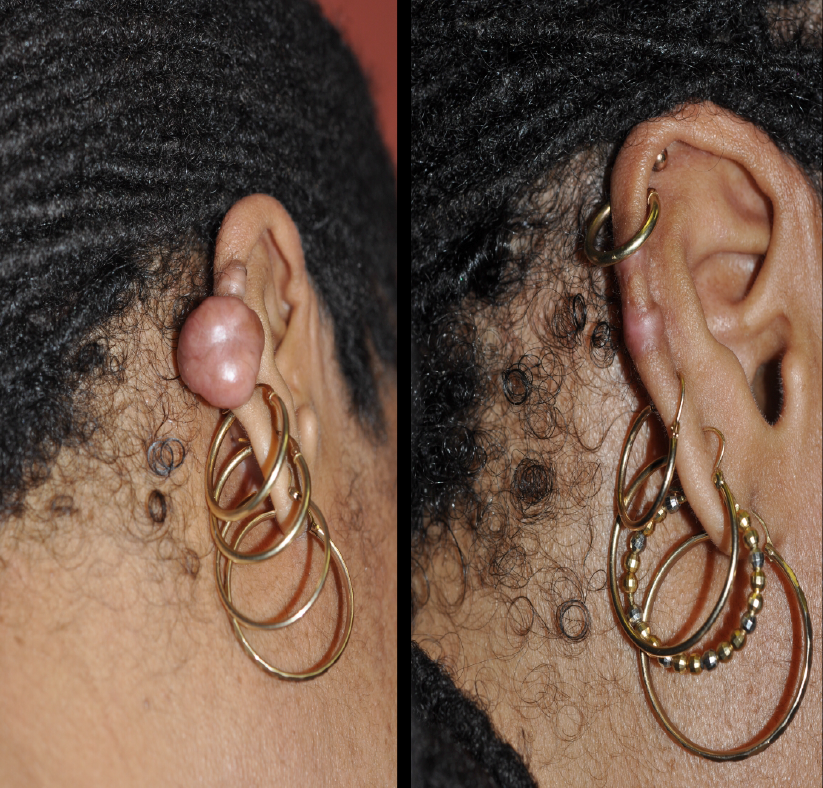- Acne
- Actinic Keratosis
- Aesthetics
- Alopecia
- Atopic Dermatitis
- Buy-and-Bill
- COVID-19
- Case-Based Roundtable
- Chronic Hand Eczema
- Chronic Spontaneous Urticaria
- Drug Watch
- Eczema
- General Dermatology
- Hidradenitis Suppurativa
- Melasma
- NP and PA
- Pediatric Dermatology
- Pigmentary Disorders
- Practice Management
- Precision Medicine and Biologics
- Prurigo Nodularis
- Psoriasis
- Psoriatic Arthritis
- Rare Disease
- Rosacea
- Skin Cancer
- Vitiligo
- Wound Care
Article
Are lasers the answer for keloids, hypertrophic scars?
Scars happen. Doing a routine skin biopsy, performing a surgical facial rejuvenation treatment or Mohs surgery - dermatologists and cosmetic surgeons cause scars. But they can also treat them.
Scars happen. Doing a routine skin biopsy, performing a surgical facial rejuvenation treatment or Mohs surgery - dermatologists and cosmetic surgeons cause scars. But they can also treat them.

Hypertrophic burn scar before and after treatments with S/P 3 Laser. (Photos: Jill Waibel, M.D.)
Jill Waibel, M.D., a dermatologist at Miami Dermatology and Laser Institute in Florida, is passionate about scars and has spent much time treating the scars on military veteran patients. Dr. Waibel will be presenting on “Keloids and Hypertrophic Scarring: Gaps and Challenges” at the 2014 Vegas Cosmetic Surgery and Aesthetic Dermatology meeting in June.
“It's an exciting time,” Dr. Waibel says of scar research. “There's a lot of work going on around the world.”
Dr. Waibel’s clinic has treated more than 50,000 scars, and she was one of the authors of a recent consensus statement about laser treatment of traumatic scars that was published in JAMA Dermatology about laser treatment. The report focused on ablative fractional laser resurfacing.
“Laser scar therapy, particularly fractional ablative laser resurfacing, represents a promising and vastly underused tool in the multidisciplinary treatment of traumatic scars,” the authors concluded.

Keloid before and after one laser treatment.
“Changes to existing scar treatment paradigms should include extensive integration of fractional resurfacing and other combination therapies guided by future research.”
She also plans to discuss the future of keloids and hypertrophic scar treatment.
During Dr. Waibel’s presentation in June, she hopes dermatologists will learn how to add new scar treatments to their practices.
“A lot of the lasers we're using are the ones people have in their offices already,” Dr. Waibel says. “I think you'll be able to leave the presentation saying, ‘OK, I can go back to my office and do this.’”
“We’re going to have to figure out this genetic story,” she says of the future of keloid treatment. “I think prevention is the key.”
At VCS 2014, Dr. Waibel will also be presenting on:
- Treatment Options of Aging Face Rejuvenation Across Skin Types and the Use of Fillers in Combination with Laser Therapy for Treating the Aging Face
- Roundtable Panel Discussion: Light-Based Technology 2014 – Separating Hope from Hype
SPECIAL DISCOUNT OFFER:
Receive a 10 percent discount on your meeting registration when you register through the mail or phone using our promo code: DERM2014. This promo code will not work on online registrations. For more information, visit the VCS registration page.
VCS 2013 coverage
Did you miss last year’s meeting? Get caught up on what happened by reading our VCS 2013 coverage and watching videos from our panel discussion about fillers and neurotoxins.
Newsletter
Like what you’re reading? Subscribe to Dermatology Times for weekly updates on therapies, innovations, and real-world practice tips.











